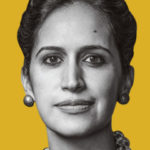The idea of The Experience Economy is more than 15 years old — first described in a 1998 article in the Harvard Business Review by B. Joseph Pine II and James H. Gilmore, who wrote: “An experience occurs when a company intentionally uses services as the stage, and goods as props, to engage individual customers in a way that creates a memorable event. Commodities are fungible, goods tangible, services intangible, and experiences memorable.”
That idea has infiltrated modern business, laying the groundwork for a customer philosophy that is at the core of companies from Starbucks to Zappos — which pay as much attention to how you experience what they’re selling you as to what they’re selling you — and tapping into the Millennial generation’s desire for authentic, emotionally resonant interactions.
“There has been a major sea change across the entire economy,” Kerry Bodine, co-author of Outside In: The Power of Putting Your Customers at the Center of Your Business, said during a preview of her closing keynote at the Exhibition & Convention Executives Forum in Washington, D.C., in May. “Now when you say ‘customer experience,’ people don’t say, ‘What’s that?’,” she said. “They say, ‘Oh, let me tell you about this terrible customer experience I had.’ Or, ‘Let me tell you about some new things our company is doing.’”
It’s taken longer for the exhibitions industry to adapt, but increasingly corporations are bringing an experiential approach to their trade-show presences, from interactive activities to guerilla marketing campaigns to customized learning programs. “We’ve made some leaps and bounds over the past 18 months with the conferences that we’ve run,” said Colleen Bisconti, vice president of global conferences and events for the IBM Software Group. “But I see in the next 12 months us even taking it to an entirely new level and really getting into things like artificial intelligence…. Think about [virtual-reality headset] Oculus Rift and ways that we can have people actually experience our technology at work by industry, for example, instead of just saying, ‘You’re in insurance, let me show you a demo.’ That’s very passive.”
And as Convene found from talking to IBM and three other companies — along with their experiential-marketing partners — passive is out. So is indirect. Active and direct are in.

Show: IBM InterConnect 2015, MGM Grand and Mandalay Bay, Las Vegas, Feb. 21–25
Agency: George P. Johnson Experience Marketing
Goal: Dedicated to cloud and mobile computing, InterConnect was a new event that combined three previously freestanding conferences — IBM Impact, IBM Innovate, and IBM Pulse. Total attendance was upwards of 22,000 existing and potential IBM clients. “As our business evolved, we began to see a lot of the messages and a lot of the value begin to merge between conferences,” Bisconti said, “so it made sense to pool them all together so we could tell the whole, end-to-end, cohesive IBM story to a set audience.” On InterConnect’s EXPO floor, where IBM and its business partners were demonstrating their products and services, that meant thinking about “what was the cloud strategy that we were trying to roll out,” Bisconti said, “and how can we have people experience it versus just being told about it, right? How do you immerse an attendee into the overall experience?”
Solution: Attendees were at InterConnect to learn all about the cloud — and IBM and George P. Johnson made that an interactive experience. The conference portion of the event featured more than 2,000 technical sessions categorized into eight different “streams” (including Asset Management & Internet of Things, Cloud Business Applications, and Security Intelligence), and EXPO was organized in the same way, with a color-coded, hexagonal hub for each stream. At the center of the floor was a cloud and mobile showplace — and at the center of that was an experience called the Urban Art Cloud.
Through the art cloud, attendees were invited to step up to an interactive plasma screen and, using an IBM Cloud app, create a piece of art — doodling something original, cutting-and-pasting or dragging-and-dropping pre-selected images, or some combination. “Once they were happy with their artwork, they then hit ‘send,’” said Robin Kleban, George P. Johnson’s executive director of strategy and planning in support of IBM software conferences, “and it pushed to a bigger stage.” Attendee artwork was projected onto a variety of spaces throughout the EXPO, including a massive canvas “cloud” surface stretched over the cloud area and a 27-screen engagement wall. Artists were encouraged to share their creations via social media, and given an official IBM Urban Art Cloud t-shirt if they did.
“I never expected that we would have, literally, dozens and dozens of people in line waiting to create art,” Bisconti said. “For whatever reason, it just really captured the attention of a lot of people and it ended up being a really powerful part of that center experience.”
What’s to come: “It’s not IBM-centric,” Kleban said. “It’s not about, what can we sell you? It’s not even about, how can we solve your problem? It’s more about, we know this; or, tell us about this. It’s engaging in the conversation and really having the attendees be at the center of the experience.”

Show: Art Basel Miami Beach 2014, Miami Beach Convention Center, Dec. 4–7
Agency: Brightline Interactive
Goal: Toyota wanted to get influential consumers talking about the 2015 Corolla — in the way that such people tend to talk in the 21st century. “Their business goal was to generate social traffic,” said Jason Kuntz, creative director for Brightline Interactive, an Alexandria, Virginia–based digital agency, “and one of their main drivers of social traffic — and what they were using to target their demo — was actually Twitter.”
Solution: Working with Toyota’s media agency, Burrell Communications, “we had the idea that it would be cool if we could create art,” Kuntz said. “This is really driven to their urban market, which is actually focused on creating events or creating an experiential campaign around art and music festivals and events.” The result was Make Your Mark, which debuted at Art Basel Miami Beach last December.
The campaign involved a glass-enclosed, 20-foot-by-20-foot white space, in the middle of which sat a gleaming white 2015 Toyota Corolla. Anyone who tweeted the hashtag #MakeYourMark — at Art Basel or anywhere else — triggered one of six robotically controlled paintball guns that fired one of six different colored pellets at a large blank canvas behind the Corolla. After about 4,500 pellets, there wasn’t a speck of paint on the car — but the canvas had a complete piece of art. “The finished product was actually location-specific,” Kuntz said. “So for Miami, we used very bright neon colors that were very Miami-centric, but also it was more abstract, street-art-inspired.”
What’s to come: “I think it speaks to this whole new world that’s going to develop over the next five to 10 years,” said Erik Muendel, Brightline’s CEO and chief creative officer, “where the [mobile] device just isn’t going to be the gateway to information, it’s also going to be the gateway to purchasing, and then hopefully personalizing and customizing your environment. This is kind of like the first step into that world. It is very much a controlled experience — you can only do so many things — but people are in control and in command of it.”

Show: The Exchange 2015, Phoenix Convention Center, April 29–May 2
Agency: Experient, A Maritz Travel Company
Goal: Over the 20 years that Vision Source — a North America–based network of private-practice optometrists — has been holding its annual conference, the event has grown from around 100 attendees to more than 3,500. Three years ago, Vision Source rebranded the event as The Exchange, because “we felt that best described what was going on at our meeting,” said Randy Sones, Vision Source’s vice president of marketing and advertising. “It’s a lot of exchange of ideas, information, best practices — things like that.” But the company felt that the meeting had never actually delivered on that promise, and in fact “might have gotten a little bit stale,” according to Hannah Beth Eakin, event manager for Vision Source. Vision Source turned to Experient, Sones said, “to help us think about, what is the promise we’re making to our guests, to our members who come? How can we best deliver that?”
Solution: Experient began by leading Vision Source’s executive team through the Maritz Experience Innovation Lab, a two-day program that is “a combination of using human-centric science along with a strategic approach called design thinking,” said Cynthia Hornketh, CMM, vice president of experience design for Experient. “We don’t come in and say to our clients, ‘Here’s our recommendation. This is what you do.’ We give them the framework and tools to be able to use this science and this approach to go off and make their events better.” The upshot of Vision Source’s time in the Innovation Lab: “We all arrived at the same unifying principle [for The Exchange],” Sones said, “which is connection. This is the place where we can connect with our members. We connect our members with their peers. We connect our members with their vendors.”
Armed with that newly clarified focus, Vision Source enacted a number of experience-based initiatives for The Exchange 2015. Even the small details counted, such as giving attendees a lapel pin indicating the number of years they’d been members of Vision Source. “Our president and CEO referenced those in his opening address,” Sones said, “and encouraged new members to seek our more experienced members and learn from them.” Likewise, the general session seating area was reconfigured to offer classroom-style up front, couches in the middle, and theater-style in back. “Attendees were able to pick and choose what style fit their style,” Eakin said. “It was another way to make them feel more connected with each other, with people with similar preferences.” And Vision Source executives were out and about throughout the meeting, introducing people and helping them make connections.
What’s to come: “It’s an ongoing process, and it’s definitely not something you can do one time and be set,” Eakin said. “Meetings are constantly changing. Every year, you’re going to face new challenges.”

Show: South by Southwest (SXSW) 2015, Austin, March 13–22
Agency: Eventbase
Goal: SXSW was looking for sponsor-activation campaigns that would make fun, creative use of the network of more than 1,000 smart beacons it had installed across 250 venues in Austin and integrated with the official SXSW GO app — meaning attendees who had downloaded the app could receive specific content when they were near a beacon. “It’s a good spot for sponsors to kind of show off and do some cool stuff,” said Michael Brown, senior technical project manager for SXSW. “What was hard for us, though, is we didn’t want it to seem like it was just spam or just, ‘Hey, buy this!’ Our crowd is sensitive to that.” When USA Network expressed interest in promoting “Mr. Robot,” a new show about computer hackers that was premiering at SXSW in advance of its broadcast debut in June, SXSW turned to Eventbase, the Vancouver-based mobile event technology company that developed the app.
Solution: The experience that Eventbase helped create played off the show’s themes of cyber security and subterfuge. Upon getting close to the SouthBites Trailer Park — SXSW’s food-truck area, right outside the Austin Convention Center — attendees who had elected to receive notifications via SXSW GO would get a mysterious message: “#MrRobot hacked ur phone & can see, hear, & track u. Find the hackers @ Southbites & get free food for ur troubles.”
Attendees who responded would be taken through instructions for getting a free voucher for one of the food trucks. It involved approaching one of the several dozen people — wearing dark hoodies and sunglasses — circulating around the Trailer Park. “The way you did it was by getting a selfie taken with the hackers in the background and then mentioning ‘Mr. Robot’ in your tweet about them,” said Jeff Sinclair, co-founder of Eventbase. “It was just a great activation that was a creative use of that technology.” Brown added: “Nowhere did it say ‘USA Network’ or anything like that. I think it fit well. People would look at it and say, ‘What is this?’”
What’s to come: “Sponsors are definitely gravitating toward this because it’s that proximity that really makes it interesting, right?” Sinclair said. “We have the ability to send out a message to everybody using the app, but if they get a hyper-local message that’s relevant to the sponsor when they’re nearby the activation, then that can help drive people to participate in that sponsor’s on-site activation. I think that’s a key for them.”


